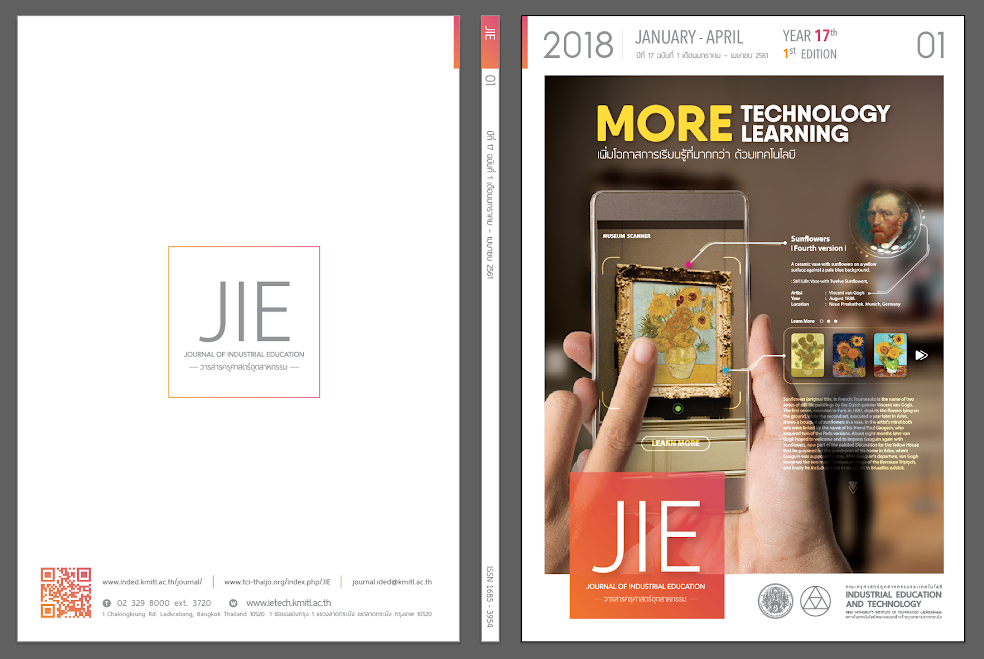A CONCEPTUAL FRAMEWORK OF A FLIPPED CLASSROOM WITH THINK-PAIR SHARE AND PROJECT - BASED LEARNING
Keywords:
Flipped Classroom, Think-Pair Share, Project Based LearningAbstract
The objective of this research was to 1) synthesize and conceptual framework of a flipped classroom with think-pair share and project-based learning 2) evaluate framework of a flipped classroom with think-pair share and project-based learning for developing the computer instruction on computer and animation course for department of computer education, bachelor degree. The research process consisted of 5 steps as follows: 1) studied journals, text, and researches 2) synthesis a framework 3) define expert group 4) presented conceptual framework 5) corrected and conclusion. The research results was FCPjBL Model that consisted of 3 part 6 modules as follows: input part 1) Teacher Module 2) Student Module, process part 3) FC Learning Module 4) PjBl Module, output part 5) Project Module and 6) Examiner Module. The evaluation results of the synthesized model. It revealed that the accepted the synthesized it can be determined that can be used the synthesized.
References
[2] Piyawadee Pongsawat and Namon Jeerungsuwan. 2015. The Instruction Design Flipped Classroom Model by Using WebQuest Activities to Develop Learning Skills in The 21st Century for Students in Higher Education. Technical Education Journal King Mongkut’s University of Technology North Bangkok, 6(1), pp. 151-158.
[3] Sumalee Siksen and Monchai Tiantong. 2011. A Conceptual Framework of an Online Project Based Learning System with a Learner Guidance System Base on Multiple Intelligence Analysis. The 7th National Conference on Computing and Information Technology, pp. 699-703.
[4] Monchai Tiantong. 2011. Innovation: computer-based learning and teaching. Bangkok: King Mongkut's University of Technology North Bangkok.
[5] Saowaluk Suwannarong Aukkapong Sukkamart and Paitoon Pimdee. 2015. The Development of Instructional Packages for Reinforce The System Thinking with Cooperative and Problem-Based Learning for Mathayomsuksa 5 at Bodindecha (Sing Singhaseni) School. Journal of industrial education, 14(3), pp. 699-703.
[6] Vijarn Panit. 2013. Teacher for students create Flip Classroom. Bangkok: SR Printing mass product.
[7] Aunop Vuthi. 2015. Development of Training Program for Project Based Fundamental Vocational Subject to Enhance Creative Thinking. Doctor of Industrial Business and Human Resource Development King Mongkut’s University of Technology North Bangkok.
[8] Office of the National Education Commission. 1999. National Education Act of B.E.2542 (1999). Bangkok.
[9] Peerapat Chuejeen. 2014. Google Classroom.Retrieved August 15, 2017, from https://www.nextwider.com/2014/05/07/classroom- google/
[10] Tanavoot Nilmanee. 2013. A conceptual framework of Project-based Learning Model using VARK Learning Style Groupings on Ubiquitous Learning Environment and using Rubric for Evaluation.Retrieved August 15, 2017, from https://oer.thaicyberu.go.th/bitstream/handle/ 6626105234/869/TCU-con-nec2013-slide-D1-7-thanawut.pdf.sequence=1
Downloads
Published
How to Cite
Issue
Section
License
"The opinions and contents including the words in papers are responsibility by the authors."
"ข้อคิดเห็น เนื้อหา รวมทั้งการใช้ภาษาในบทความถือเป็นความรับผิดชอบของผู้เขียน"



